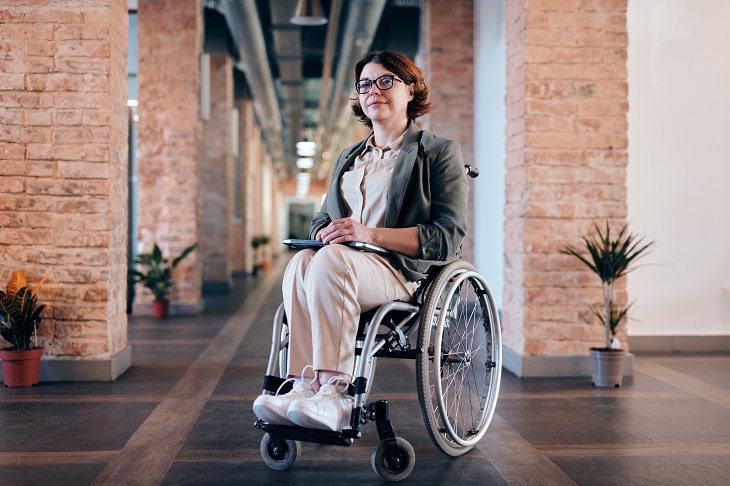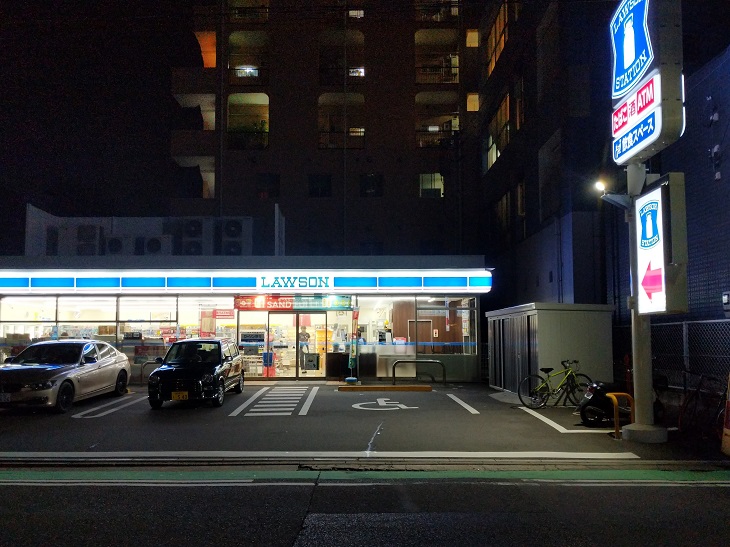7 Things You Should Know About Disabled Parking If You’re In a Wheelchair

Millions of Americans use a wheelchair at some point in their lifetime. Some people are long-term wheelchair users, while others spend only a few weeks in one due to a temporary disability. Knowing how to park when you’re in a wheelchair, as well as your disabled parking rights, is important.
The large majority of American wheelchair users are capable of driving, especially with the impressive array of vehicle adaptations for wheelchair-using disabled drivers available today. Technology, in the form of vehicle adaptations and modifications, as well as handy smartphone apps, is making driving easier than ever for wheelchair users.
Several considerations should be taken into account when you are in a wheelchair and using disabled parking. What type of disabled parking permit should you get? What are the legal regulations regarding disabled parking spaces? How do you get in and out of your vehicle safely? What technology can you make use of as a wheelchair user? How do you apply for a disabled parking permit as a wheelchair user?
Read on for seven key things you need to know about handicap parking as a wheelchair user.

1. A Wide Range Of Injuries Can Necessitate Wheelchair Usage
People need to use a wheelchair for a wide array of reasons. Some people are disabled for life, whereas others use a wheelchair for only a short period of time. Lots of disabled parking permit-holders use a wheelchair.
Needing to use a wheelchair, for any reason, is a qualifying condition in and of itself for a disabled parking permit. Some of the most common reasons that disabled parking permit-holders use a wheelchair are:
- Amputation
- Arthritis
- Broken bones
- Cardiovascular disease
- Lung disease
- Neurological diseases
- Orthopedic conditions
2. Several Types Of Disabled Parking Permits Are Available
Wheelchair users can avail of several different types of disabled parking permit. The exact types of permit available varies state-by-state, but all states have some versions of the following disabled parking permit variations:
- Permanent disabled parking placard or license plate. This is for people with a long-term disability. Many wheelchair users fall into this category, such as amputees and people with a neurological disease.
- Temporary disabled parking placard. This is for people whose disability is expected to be short-term. Wheelchair users in this category include people with broken bones and other temporary injuries, and in some states, pregnant people.
- Disabled Veterans license plates. DV plates are for people whose disability is related to their military service.
- Organizational placards and plates. These are for organizations that transport disabled people.
3. Wheelchair Accessible Parking Spaces Are Regulated By The ADA
The Americans With Disabilities Act covers the rules and regulations regarding universal access parking spaces. Some of the rules the ADA stipulates are:
- There must be a certain number of disabled spaces in any parking facility. (For example, in a facility with 1–25 parking spaces there must be one disabled space, and in a facility with 26–50 spaces there must be two disabled spaces.)
- Medical facilities must have additional disabled parking spaces.
- Disabled spaces must connect to the shortest accessible route to the building or facility they serve.
- Disabled spaces must be eight feet wide and van-accessible spaces must be 11 feet wide. Access aisles for either type of space must be five feet wide.
- Disabled spaces must be clearly marked by the universal access symbol.

4. It’s Important To Know How To Enter And Sit In Your Vehicle Safely
As a wheelchair driver, it’s important that you are careful at all times when getting in and out of your vehicle.
Some of the most important recommendations when getting in and out of your vehicle as a wheelchair user include:
- If possible, get into the vehicle’s seat, which is designed for maximum crash safety.
- If you need to stay in your wheelchair, make sure it is a WCl9-compliant wheelchair (which means it is designed for use as a vehicle seat, has a safety belt, and has been crash-tested).
- Position your seatbelt correctly.
- Safely anchor your wheelchair using a four-point tie-down system, whether you are sitting in the wheelchair or in the vehicle seat.
5. Vehicle Adaptations Can Make Life Easier For Disabled Drivers
Vehicle adaptations for wheelchair users are improving all the time. Some of the most useful adaptations for wheelchair users are:
- Hand controls
- Adaptive electronic controls
- Wheelchair ramps and lifts
- Lowered floors and raised roofs
- Steering wheel extensions
- Transfer seats
6. Smartphone Disabled Parking Apps Can Help You Find Parking
Several apps are available to make life easier for wheelchair users looking for disabled parking.
Wheelmate is an example of a useful app that helps you to find wheelchair accessible parking and restrooms near you.
7. Applying For Disabled Parking Is Easy
Getting a handicap parking permit when you’re in a wheelchair is an easy process. Simply go to Dr. Handicap and set up an online consultation with a doctor, who will verify your disability and recommend the best type of disabled parking permit for you.
They will write you a letter of recommendation and you will have your own disabled parking permit within a few weeks.
Featured image by Marcus Aurelius on Pexels